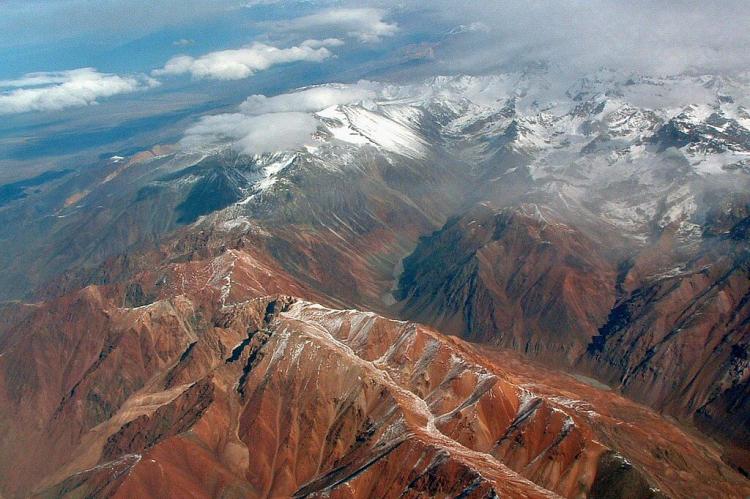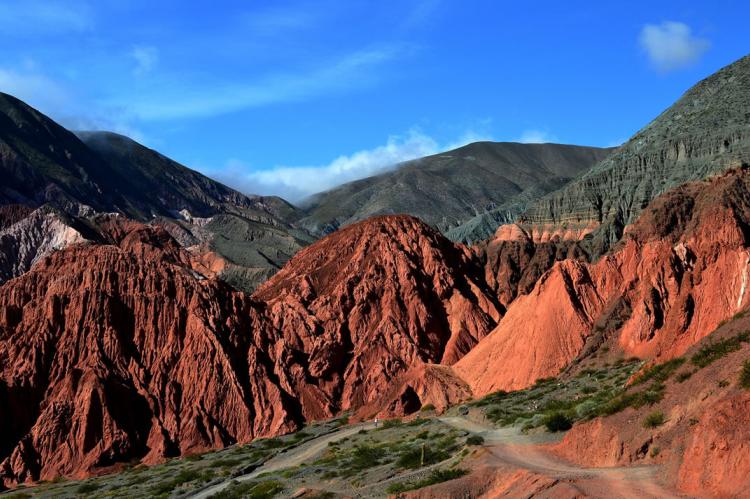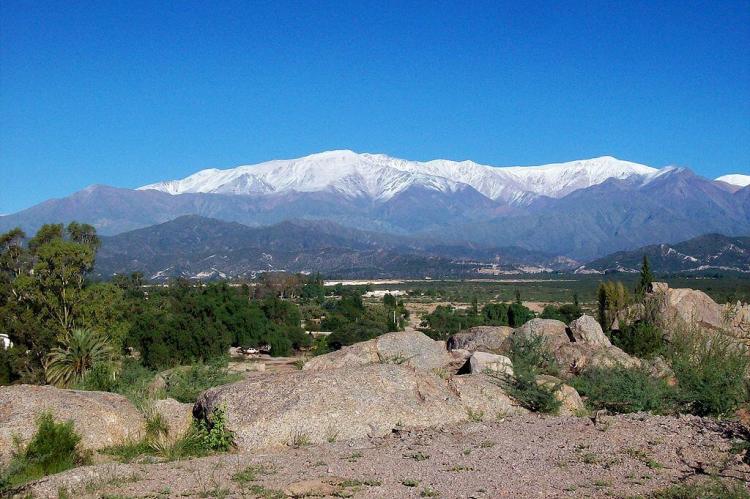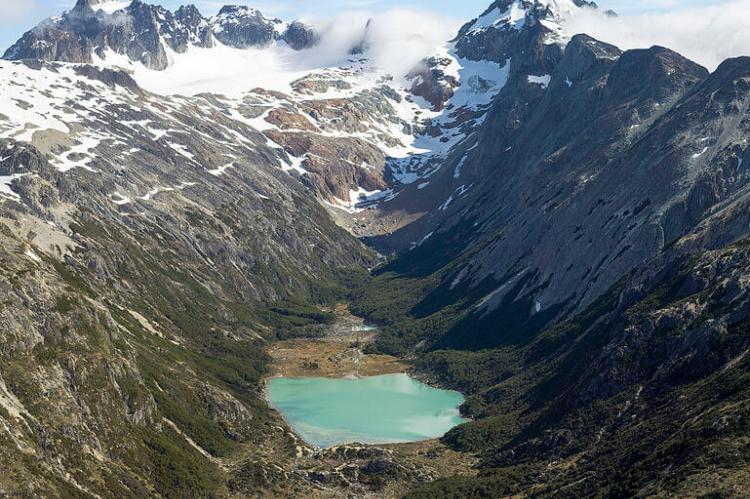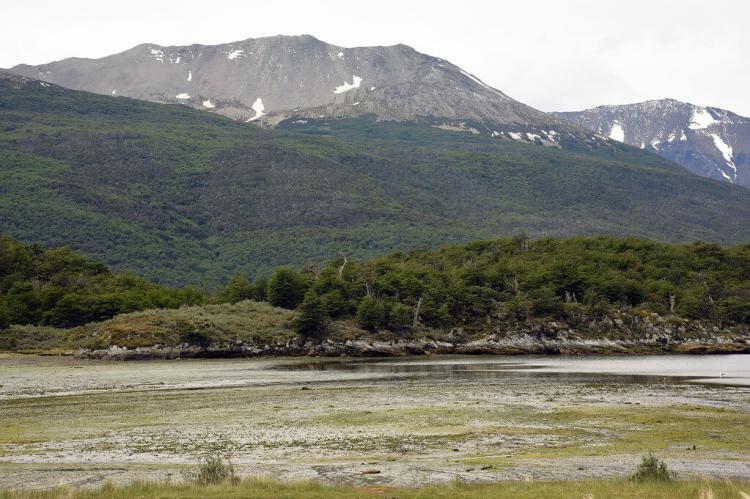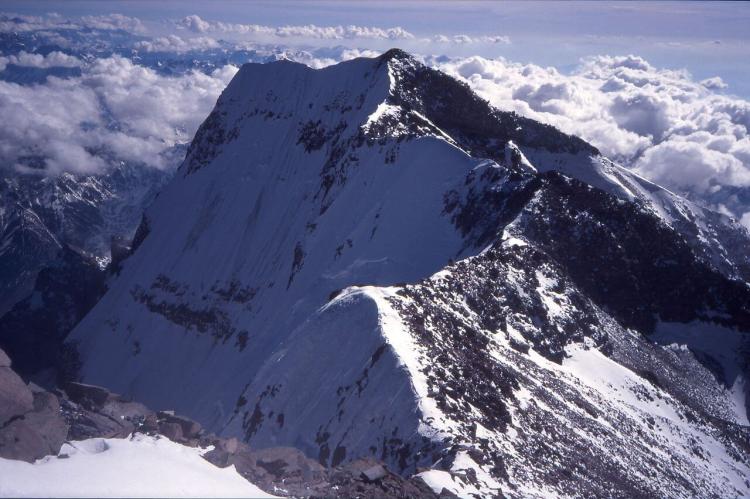Mountain Ranges and Major Peaks of Argentina
Argentina is a vast country with a diverse geography, home to several mountain ranges across different regions. From the towering peaks of the Andes to the picturesque hills of the Sierra de la Ventana, Argentina's mountains provide diverse experiences for travelers and outdoor enthusiasts.
Mountain Ranges and Major Peaks of Argentina
Argentina is a vast country with a diverse geography, home to several mountain ranges across different regions. From the towering peaks of the Andes Mountains to the picturesque hills of the Sierra de la Ventana, Argentina's mountains provide a diverse range of experiences for travelers and outdoor enthusiasts. Some of Argentina's significant mountain ranges offer unique landscapes, recreational opportunities, and natural wonders.
Andes Mountains
The Andes is the most extended mountain range in the world and runs along the western border of Argentina, forming a natural boundary with Chile. The Argentine Andes are renowned for their majestic peaks, including Aconcagua, the highest mountain in the Southern and Western Hemispheres, standing at 6,961 m (22,837 ft) above sea level. The Andes offer opportunities for mountaineering, trekking, and winter sports, providing a dramatic backdrop to the landscapes of the western provinces.
-
Andes de Salta and Jujuy: In the provinces of Salta and Jujuy, the Andes offer striking landscapes, including colorful mountains, salt flats, and high-altitude deserts. The Quebrada de Humahuaca, a UNESCO World Heritage Site, is located in this region and is renowned for its unique geological features and historical significance.
-
Andes de Catamarca: Situated in the province of Catamarca, the Andes de Catamarca is a mountain range known for its high-altitude deserts, volcanoes, and arid landscapes.
-
Andes de La Rioja: Located in the province of La Rioja, the Andes de La Rioja is a mountain range with rugged mountains, deep canyons, and desert landscapes. The region is a popular destination for outdoor activities and nature enthusiasts.
-
Andes de Mendoza: Located in the province of Mendoza, the Andes de Mendoza is famous for its vineyards, snow-capped peaks, and proximity to Mount Aconcagua.
-
Patagonian Andes: The Andes continue as the Patagonian Andes in southern Argentina. This section of the Andes features stunning landscapes, including glaciers, lakes, and snow-capped peaks. The region is famous for its impressive national parks, such as Los Glaciares National Park and Nahuel Huapi National Park, which draw visitors worldwide.
-
Fuegian Andes: In the southernmost region of Argentina, the Andes Fueguinos extend through Tierra del Fuego, featuring rugged mountains and glaciers.
Major Peaks of the Argentine Andes:
-
Aconcagua, 6,961 m (22,838 ft)
-
Cerro Bonete, 6,759 m (22,175 ft)
-
Galán, 5,912 m (19,396 ft)
-
Mercedario, 6,720 m (22,047 ft)
-
Pissis, 6,795 m (22,293 ft)
Major Peaks Along the border between Argentina and Chile:
-
Cerro Bayo, 5,401 m (17,720 ft)
-
Cerro Fitz Roy, 3,375 m (11,073 ft) or 3,405 m, Patagonia, also known as Cerro Chaltén
-
Cerro Escorial, 5,447 m (17,871 ft)
-
Cordón del Azufre, 5,463 m (17,923 ft)
-
Falso Azufre, 5,890 m (19,324 ft)
-
Incahuasi, 6,620 m (21,719 ft)
-
Lastarria, 5,697 m (18,691 ft)
-
Llullaillaco, 6,739 m (22,110 ft)
-
Maipo, 5,264 m (17,270 ft)
-
Marmolejo, 6,110 m (20,046 ft)
-
Ojos del Salado, 6,893 m (22,615 ft)
-
Olca, 5,407 m (17,740 ft)
-
Sierra Nevada de Lagunas Bravas, 6,127 m (20,102 ft)
-
Socompa, 6,051 m (19,852 ft)
-
Nevado Tres Cruces, 6,749 m (22,142 ft) (south summit) (III Region)
-
Tronador, 3,491 m (11,453 ft)
-
Tupungato, 6,570 m (21,555 ft)
-
Nacimiento, 6,492 m (21,299 ft)
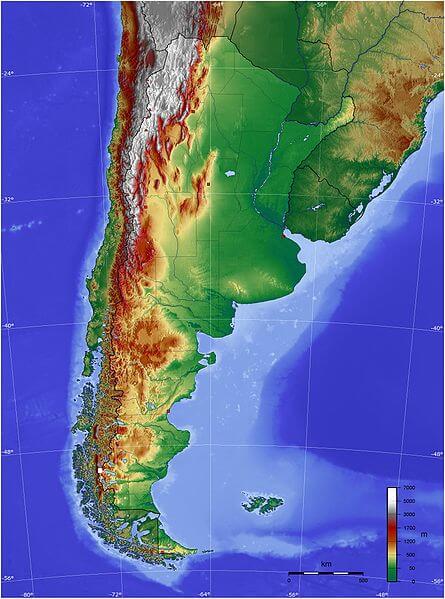
Topographical map of Argentina.
Other Mountain Ranges
-
Sierra de la Ventana: Located in the province of Buenos Aires, the Sierra de la Ventana is a smaller mountain range known for its striking rock formations and scenic beauty. It offers opportunities for hiking, rock climbing, and enjoying the picturesque views of the surrounding countryside.
-
Sierra de Córdoba: The Sierra de Córdoba is a mountain range in the central region of Argentina, in the province of Córdoba. This range is characterized by low, rolling hills and deep valleys, providing a natural escape for residents of Córdoba. The Sierras of Córdoba offer opportunities for hiking, camping, and enjoying tranquil landscapes.
-
Sierras Pampeanas: The Sierras Pampeanas is a group of mountain ranges in Argentina's central and northwestern parts. This region is known for its diverse landscapes, including tall peaks, plateaus, and fertile valleys. The Sierras Pampeanas are an essential source of water and support various ecosystems.
-
Sierra de Famatina: Located in the province of La Rioja, the Sierra de Famatina is known for its rugged terrain and desert-like landscapes. The range is home to diverse flora and fauna and offers hiking and trekking experiences for nature enthusiasts.
-
Sierra de San Luis: The Sierra de San Luis is located in the province of San Luis and features a combination of mountains, valleys, and plateaus. The range is known for its unique geological formations and is part of the larger Sierras Pampeanas, a system of mountain ranges in central Argentina.
-
Sierra de Santa Victoria: Situated in the province of Salta, Sierra de Santa Victoria is part of the Eastern Cordillera of the Andes. Lush forests, deep canyons, and impressive waterfalls characterize this range. The area is renowned for its ecological importance and attracts visitors interested in nature and eco-tourism.
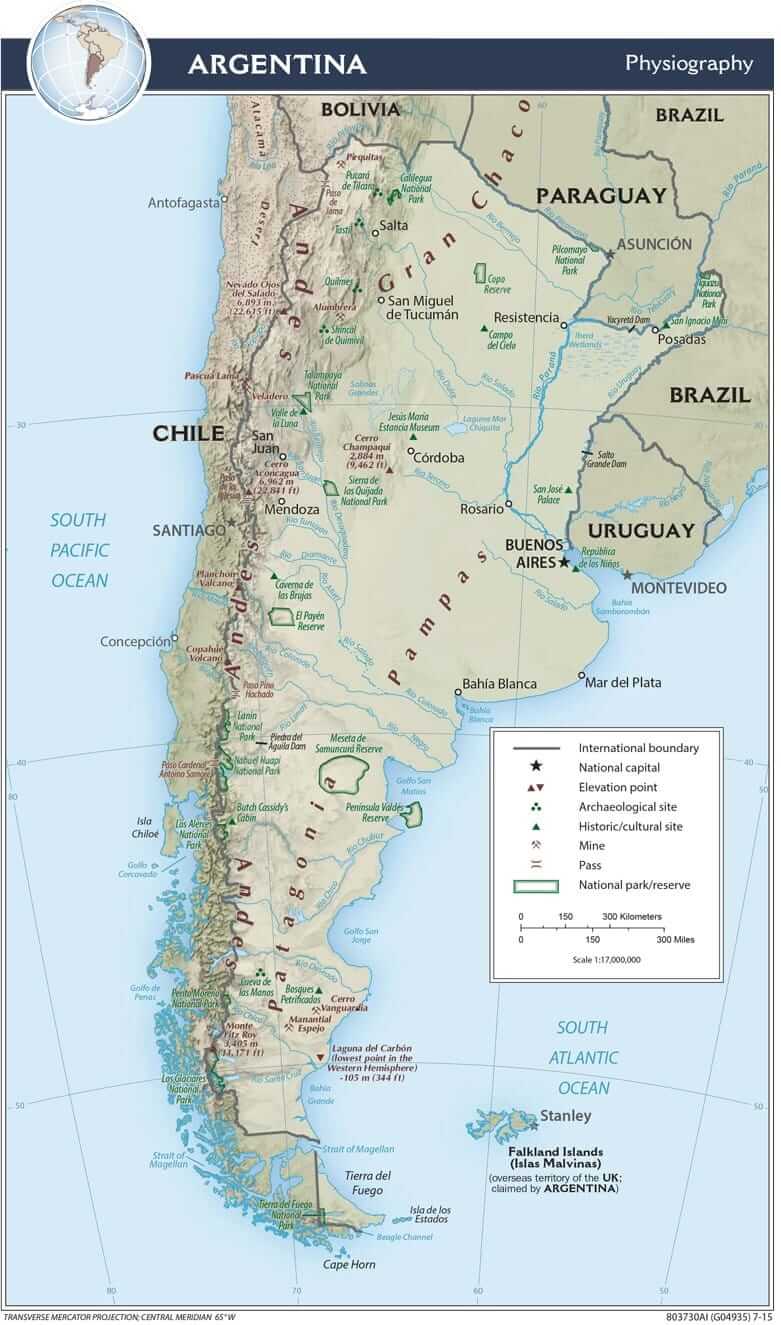
Argentina physiographic map.
